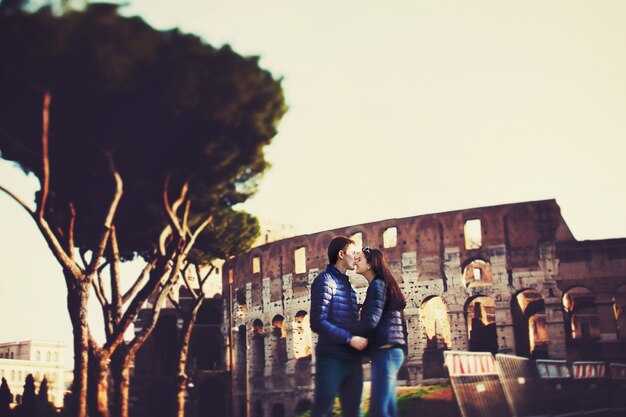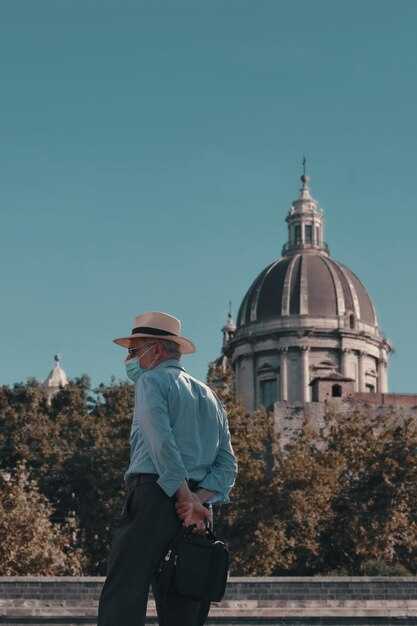Begin at Plaza de Mayo at dawn to feel the city breathe and map your destination for a day of memory. In the central square, a column of light spills across the Casa Rosada, and the air carries the rich pulse of a town that has welcomed migrants, generals, and dreamers alike.
From there, wander toward the Teatro Colón, where an intricate interior houses frescoes and a history that pioneered modern stagecraft. The building stands on a block that has hosted operas, premieres, and debates since the 19th century, showing how culture and public life shaped the city.
In defensa, San Telmo’s streets run along a long block where a line of houses keep watch over markets and memories. Interested readers peek into the bares along the way, where conversations spill into the evenings. A mural by juan Díaz reveals memories of the port region and the people who kept trade running through the years.
Head to La Boca, where yellow houses line the Caminito and frescoes brighten a memory-rich town that kept its color even as ships shifted the coast. The nearby stadium anchors a living, breathing tradition, while street musicians and dancers keep the rhythm of the port alive.
Interested readers will map a region-wide loop that links Plaza de Mayo, San Telmo, La Boca, and Recoleta–like a compact atlas you can walk. しかし quick, the route runs through layers of social history and architectural detail that draw the eye to every corner.
A History Lover’s Guide to Buenos Aires: Timeless Landmarks and Hidden Stories; – 5 Manzana De Las Luces
Start your exploration at 5 Manzana De Las Luces by entering through the gate on Defensa Street and dedicating about 40 minutes to trace the jesuítica core: the old Colegio Nacional, the nearby basílica, and the winding lanes that connect these spaces. This is a concrete recommendation to begin here, a must for many visitors.
Within the block, the jesuítica education network shaped regions across argentina and argentinas, serving the elite with schools and a network that linked to missions in Asia; facades and interiors still show painted ceilings and careful stonework that speak to histórico time.
Hidden stories: a cave beneath the street floor is whispered to connect to early Jesuit cellars; tourist guides sometimes include these spaces, and you can see exhibitions and a collection that illuminate the era. Below the cobbles, mayo events and the movement that formed the national memory are hinted in old maps and plaques.
Practical tips: sip coffee at cafes and sample food in nearby places; the 5 Manzana De Las Luces site is designated as a national historic site, so follow access routes and signs. This area suits a tourist who wants to explore urban history on foot and mix with local life.
From 5 Manzana De Las Luces, extend your walk to places along plata’s riverfront and surrounding plazas; the francis legacy appears in street names and plaques, and you will sense how the regions and nations of argentinas define a shared history. The experience invites you to explore the connections between the navy heritage, the early education networks, and the cultural food and arts around the block.
| Site / Aspect | なぜそれが重要なのか | What to do | ベストシーズン |
|---|---|---|---|
| Old Colegio Nacional | Centerpiece of the jesuítica education network within the block | Walk the arcaded corridors; read plaques; observe painted ceilings | Morning 9:00–12:00 |
| Basílica nearby | 18th-century church with quiet interiors | Admire architecture; look for histórico markers | Midday 12:00–14:00 |
| The cave beneath | Legendary subterranean space linked to early Jesuit cellars | Ask at the desk for guided access if available | Seasonal |
| Exhibitions and collection | Artifacts showing education, missions, and regional links | Review timelines; compare with connections to nations | Afternoon 14:00–17:00 |
Starting Point and Route: Where to begin on Manzana de las Luces

Begin at the Front Plaza and follow the clockwise route to catch the strongest light on granite façades and glimpse the block’s long history in a single walk.
Initial Stop: Front, Exhibits, and Local Life
At the front, the house-like jesuits buildings frame the space. The daily flow of locals passes the central courtyard, and a confitería next door and a pizzería across the street provide a natural break. The cave-like corridor opens into a gallery with displays and exhibits that present a rich, global narrative of the jesuits’ impact on education, urban design, and ecological thinking in the surrounding region. rafael, a local guide, provides a running commentary that notes the notable final panel reveals how the block grew from a school to a living showcase of Buenos Aires life–having played a pivotal part in city culture. If you’re a soccer fan, you may catch a quick game on a nearby court that adds a human touch to the scene.
Route Details: Practical Tips and Final Observations
From the front, you walk toward a second cluster of spaces where granite walls host more displays and a small ecological corner that illustrates adaptation to the city’s climate. The route is compact, sure to deliver a strong sense of place, and the confitería and pizzería offer opportunities to stay and reflect. The final takeaway is that the jesuits’ legacy remains visible in daily life and in the way surrounding streets accommodate visitors. This remarkable segment of Buenos Aires history showcases how global ideas took root in a regional setting.
Key Buildings on the Block: What to look for and why they matter
Begin at the Moreno-Defensa corner and walk a short loop; you’ll spot grand, acclaimed facades, houses, and stores that anchor the neighbourhood. Read the plaques to learn who funded restorations and which presidents or politicians once spoke from the doorway. The block’s layout–fronts facing the street and quiet spaces behind–shows how public life and private life shared the same space, more layers than a single plaque could tell.
What to observe on the facade and the space behind
Look for a consistent rhythm of windows, the height of the cornices, and the transition from stone to brick. A well-preserved corner often marks a historical frontier between eras; the back often hides a small cave-like courtyard used by residents or shopkeepers. The lining of stores tells you about daily life–bakery, bookseller, hardware–each a clue to the block’s economy. Others kept tiny workshops behind the storefronts, a space not visible from the street. When you see a stadium nearby, notice how crowds spilled onto sidewalks and how merchants adapted to the rush.
Reading the people and the power on the block
Identify who lived here or ran the businesses: influential families, a team of artisans, or groups linked to peróns whose letters might still be in archives. The block records a continuum of policy and culture, from early grand style to modern, casual stores. Whether you walk with a notebook or a phone, you will read a story of resilience and change that connects asia-inspired details with local craft, a reminder that every block holds a thread of the city’s wider history, including miní spaces and traces of public life.
Untold Stories: Lesser-known legends and historical moments

Begin at Plaza de Mayo: read the inscriptions on the Cabildo and Casa Rosada and let the stories spill into your map, revealing how the city’s early political life forged a living legacy.
From there, these routes offer opportunities to read original accounts and compare them with living memory. If youre curious, youre about to discover an argentine history beyond the famous names, america’s southern front, and the everyday life of porteños.
-
Jesuits, ships, and hidden chapels
Originally, the Jesuits ran missions along the river and built networks that educated generations. Today, markers along the port stretches hint at those days. In mayo, a small chapel behind a market preserves a living memory and a miní artifact rumored to be part of a clandestine exchange between religious and civic groups. They remind you that history is a collective effort, not a single name, and youre invited to read the plaques and ask locals about these quiet corners; their stories are among the city’s enduring legends.
-
五月革命の静かなる立役者たち
1810年5月25日、カビルド・アビエルト(公開市参事会)は、都市を変える政治的台頭を触媒しました。有名な指導者たちだけでなく、印刷業者、事務員、兵士、そして女性たちが、裏部屋での議論や、後に公刊された歴史書に登場する記録された議事録によって、その決定を形作りました。これらの声は、間違いなく影響力があり、ほんの一握りの普通の役者が、あなたの訪問を今も知らせるターニングポイントをどのように導いたかを明らかにしています。
-
Avenida de Mayo: 異文化が交差する大動脈
港から国会まで伸びるこの通りには、フランスの影響を受けたファサードが地元のスタイルと並んでおり、アルゼンチンの当局者もアメリカの読者も同様に認識できる交流の遺産を形成しています。その沿道には、カフェ・トルトーニ(1858年創業)や初期の劇場があり、5月やその先の政治文化を育んだ議論やパフォーマンスが繰り広げられました。この通りは、日常生活と儀式的な行列のための永続的なルートであり続けています。
-
港沿いの隠された記憶が広がる
川沿いには、より静かな物語が秘められています。労働者が組織した市場、勇気ある生活の物語、そして磨き上げられた歴史にはほとんど登場しない英雄たちを描いた壁画などです。これらの痕跡の中に、コミュニティの声と、海と都市の間の永続的なつながりを読み取ることができます。夜明けに歩いていても、日没後に散歩していても、地図を覆す何かを発見するはずです。
教育遺産:訪問できる博物館、図書館、および機関
レコレタの国立美術館からスタートし、ゴヤ、レンブラント、アルゼンチンの巨匠たちの作品を通して過去を具体的に垣間見ましょう。特徴的な白い堂々としたファサードは、ブエノスアイレスの生活と文化の隆盛を辿るギャラリーへと続いています。ガイド付きツアーに参加したり、特別展のチケットを予約したり、芸術と日常生活、地域社会の伝統を結びつける機会を認識したりしてください。その後、近くのバーを散策して軽食を取り(食事のオプションは豊富です)、視覚文化が都市の過去と現在の感覚をどのように形作っているかを振り返ってください。
次に、アルゼンチン国立図書館を訪れ、広大な書庫、写本、科学に焦点を当てた展示を探検し、情報が地域を越え、時を経てどのように伝わるのかを明らかにしましょう。建物の大胆なラインは永続的な印象を与え、案内人付きのツアーに参加したり、セルフガイドで散策したりして、手書きのメモと最新のカタログを比較できます。体験型の時間を過ごしたい場合は、一部のプログラムで訪問者がゲストウォールに手形を残すことができます。市内を横断して中間の地域を通過する交通機関を利用し、読書室の1つで静かに読書する時間を確保してください。この施設はすべての人に学習の機会を提供し、コミュニティを強化します。建物自体が建築的な意図の物語を語っています。
一目でわかる象徴的な美術館
MALBAと国立歴史博物館は、白い壁の向こうに物語を広げ、ラテンアメリカの芸術、植民地時代の記憶、川沿いの要塞、公共の芸術におけるクルスのモチーフを独特の視点で見せてくれます。イエスを含む宗教的なイメージは、さまざまな地域の伝統への窓を開き、インスタレーションはアンデス山脈やその他の地域の生活における文化の影響を照らし出します。これらの場所は、歴史をパフォーマンスとして、つまり過去との積極的で進化する対話として捉え、美術館がアイデンティティと記憶について思慮深い会話をどのように引き起こすかを理解することを促します。
訪問できる図書館と機関
ブエノスアイレスには、ギャラリー以外にも、大学博物館、科学センター、一般公開されている施設があり、訪問者を歓迎しています。科学と日常生活を結びつけるガイド付きプログラムに参加したり、研究者が研究について語るのを聞いたり、マリアーノ・モレノ時代が教育政策をどのように形作ったかを学んだりできます。事前に計画を立てれば、講義の席を予約したり、静かな部屋でメモを取ったり、地元の人々が伝統とサッカーを同様に祝うスタジアム地区を最後に散策したりできます。図書館に立ち寄って地元の食べ物を軽く味わえば、機会、影響、そして教育がいかにすべての人々にとって生き生きとした都市を築き上げているかをより明確に感じられるでしょう。
歴史好きへのヒント:最適な時期、チケット、写真撮影、安全
スマートなタイミングとチケッティング
訪問予定の美術館のオンラインチケットを事前に購入し、15分前に到着して落ち着きましょう。午前11時前、または午後15時30分以降の遅い時間帯を選んでください。これらの指定された時間帯は、行列を減らし、急ぐことなく詳細を検討できます。複数の場所を計画している場合は、市内とその周辺地域の入場をカバーする公共コレクションまたは地方のオファーを探して、一日をより効率的にしましょう。ジュニアは割引の対象となることが多いので、学生証を携帯してください。グループで旅行する場合は、パッケージに大人とジュニアが含まれていることを確認してください。一度の購入で、古典的な場所や新しい展示会にアクセスでき、古い建築の最前線から現代都市まで、さまざまな時代を比較することができます。休憩が必要なときは、静かな部屋で一息ついて、次の目的地に向かう前に再編成することができます。
写真撮影、安全、エチケット
広角オプション付きのコンパクトカメラまたは携帯電話を持参してください。遺物を保護するため、室内でのフラッシュは避けてください。許可されている場合は、出入り口や窓から撮影し、他の訪問者に配慮してゆっくり移動してください。賑やかな広場や人気のバールの近くでは、財布や携帯電話に注意してください。公共の場所に滞在し、暗くなってからは人通りの少ない場所を避けてください。各会場の正確な時間とルールを確認してください。撮影可能な場所は指定された標識が案内します。訪問後は、近くのお店でピザを一切れ食べ、展示されているアンヘルとマリアーノに言及するアイテムを含め、見たコレクションについて考えてみましょう。より広い文脈を理解したい場合は、フマフアカや各国の公的な物語と出会った物語を比較し、これらの歴史が共有地や都市の近隣地域でどのように提示されているかに注目してください。



コメント